SUMMARY
This is AI generated summarization, which may have errors. For context, always refer to the full article.

MANILA, Philippines – The sprawling landscapes of Palawan’s Mount Mantalingahan and Romblon’s Mount Guiting-Guiting Natural Park serve as awe-inspiring showcases of the remarkable ecological wonders abundant in these areas.
Both sites are cherished for their remarkable biodiversity, with Romblon’s Sibuyan Island, where Mount Guiting-Guiting is, being called the “Galapagos of Asia” due to its high biodiversity endemism.
The area being targeted by Ipilan Nickel Corporation (INC) for mining in Barangay Maasin is located within the core zone of the Mt. Mantalingahan Protected Landscape, while the Altai Philippines Mining Corporation (APMC) seeks to explore mining opportunities within the pristine Mount Guiting-Guiting Natural Park.
But these areas face imminent threats from large-scale mining operations. Yet standing in the mining giants’ way are dedicated environmentalists who have been pushing back.
Being an environmentalist encompasses a wide range of actions, from symbolic gestures like switching off lights for Earth Hour and sharing it on social media to the ultimate sacrifice, exemplified by figures like Macli-ing Dulag and Armin Marin, who gave their lives for their cause.
In between, there exist various forms of harassment, such as red-tagging and false charges.
Dulag, a pangat (chieftain) of the Butbut tribe, played a pivotal role in opposing the construction of the Chico River Basin Hydroelectric Dam due to the perceived risks it posed to the people of Kalinga and Mountain Province. His killing, allegedly in the hands of military forces, on April 24, 1980, has since been commemorated annually as Cordillera Day in the region.
Marin, meanwhile, was an outspoken advocate against mining and a councilor of Romblon. He met a tragic end during a rally denouncing the operations of Sibuyan Nickel Properties Development Corporation on October 3, 2007. He was shot and killed during the protest.
Despite the inherent dangers, Norima Mablon from Brooke’s Point in Palawan and Beth Ibañez from Sibuyan Island in Romblon are among the many women actively opposing large-scale mining operations in their biodiverse provinces, driven by their concern for the well-being of their children and future generations.
History and heritage
Mablon, a Pala’wan who relocated to Brooke’s Point after marriage, initially lacked awareness of the mining issues affecting her community. However, as her family grew, she began contemplating her aspirations for her children and the consequences of remaining uninvolved.
“Nung nagkaroon na ako ng pamilya, doon ko na napag-isip-isip: ano ang hangarin mo para sa mga anak mo? Ano ang magiging kinabukasan nila kung ‘di makialam? (When my family started to grow, I began thinking about my aspirations for my children. What will happen in the future if I don’t get involved?)” she told Rappler.
She said it was after she attended a forum that provided comprehensive insights into the procedures and repercussions of mining that she actively took a stand against it.
Mablon said, “Sariwa ang hangin, malinis ang tubig, may pa-tubig para sa sakahan. Ano pa ang kakailanganin namin? Nabuhay na naman kami nang wala pang pagmimina. (Fresh air, clean water, irrigation for farmlands. What else do we need? We have lived well for so long without mining).”
Ibañez, meanwhile, returned to her father’s hometown of Sibuyan in 2000, seeking respite from the challenges of daily life in Metro Manila.
She said the allure of the island stemmed from having their land, house, and the ability to sustain themselves through the bounties of the soil.
Having been involved with the Catholic church, particularly the youth choir, Ibañez’s awareness of mining’s adverse impact deepened after participating in a mining forum and hearing about experiences in African nations.
Following Marin’s killing, Ibañez dedicated herself primarily to fighting for the welfare of their environment.
Protests and barricades
At the Barikada ng Bayan (People’s Barricade) organized by concerned community members on January 26, Ibañez expressed her anger towards the activities of APMC in Barangay España, San Fernando in Sibuyan Island, Romblon.
She and other protesters blocked the road leading from the exploration site to the private port, asserting that APMC lacked the required permits.
On February 1, the DENR suspended APMC’s operations due to the absence of an environmental compliance certificate for the causeway project and a cutting permit for the exploration site.
Yet, on February 3, she said, the police dispersed protesters to facilitate the passage of three mining trucks carrying nickel ore samples, resulting in injuries to two people.
In Palawan, environmentalists and their supporters staged a protest on February 18, forming a barricade at Brooke’s Point and obstructing the road between INC’s exploration site and the pier.
Mablon said the demonstration was authorized through a mayor’s permit, “unlike INC,” which, according to protesters, “operates without the required government permits.”
Allegedly, INC’s guards earlier harassed and dragged six residents through the mud before taking them to the local police station on April 14.
In Romblon and Palawan, protesters condemned what they called the questionable actions of the mining companies, including the alleged false representation of indigenous peoples and other community sectors in dialogue panels.
Mablon said the mining giant INC neither consulted with the affected communities nor obtained free, prior, and informed consent, as required by the Indigenous People’s Rights Act (IPRA).
Price to pay
Although not educated at prestigious schools, Mablon said she cherishes the old saying passed down by her ancestors, which stresses the importance of working and cultivating the land to have something to harvest and eat, as nature provides everything they need.
Fighting for the environment, however, has consequences. Ibañez, for instance, described situations resembling spy stories, where she would change her route or schedule when she sensed real danger to herself and her companions.
“But I know that I am in the right because if I were not, then they would not send people to follow me, they would not pay any attention to me,” Ibañez said.
She said her only regret is that her commitment to her cause has prevented her from providing a more comfortable life for her children. Nevertheless, she said, her children have embraced the same advocacy.
Ibañez said mining has also divided families in her community, with some advocating for it to enhance employment and economic benefits, while others oppose it due to its unsustainable nature, which could irreparably damage their environment.
Ibañez said it has reached a point when she didn’t know who to trust anymore.
She and Mablon said they fear the devastating consequences of mining-related activities that endanger lives and livelihoods – which are inextricably linked to the soil and the sea – such as deforestation leading to soil erosion, landslides, and water contamination, among other concerns.
Brooke’s Point and San Fernando, along with their neighboring areas, have seen destructive flooding due to tropical cyclones in recent times, displacing numerous families and disrupting their daily lives.
Sustainability
In separate interviews, both women chuckled at the irony of their respective places being promoted as tourist attractions for local and foreign visitors while officials allow destructive industries to operate in the area.
Ibañez said Sibuyan’s biodiversity can contribute to dynamic ecotourism, offering a sustainable livelihood that can benefit many residents if decision-makers explore the island’s interior, including Mount Guiting-Guiting.
Brooke’s Point’s soil, meanwhile, supports various agriculture-based traditional sources of income, including rice, sweet potatoes, onions, and coconut oil, Mablon said.
She quoted a line from Asin’s classic folk song: “Hindi na masama ang pag-unlad… kung hindi nakakasira ng kalikasan (Progress is not bad as long as it does not harm the environment.)”
Almost a senior citizen now, Ibañez reflected, “We reaped the benefits of the earth for so long. Let’s ensure that we leave a better world for future generations to enjoy.” – Rappler.com
Mari-An Santos is an Aries Rufo Journalism fellow.
Add a comment
How does this make you feel?
![[OPINION] An epic sustainability battle in Sibuyan Island](https://www.rappler.com/tachyon/2023/02/sibuyan.jpg?fit=449%2C449)










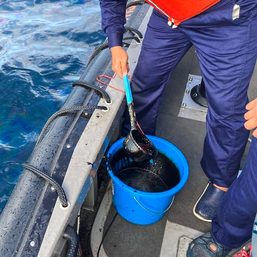








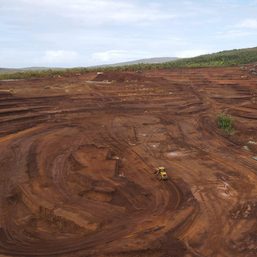

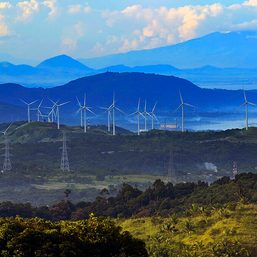







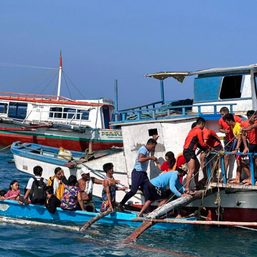
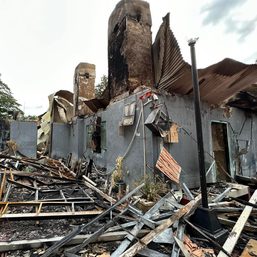
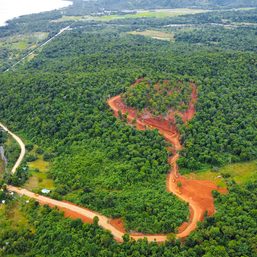
There are no comments yet. Add your comment to start the conversation.